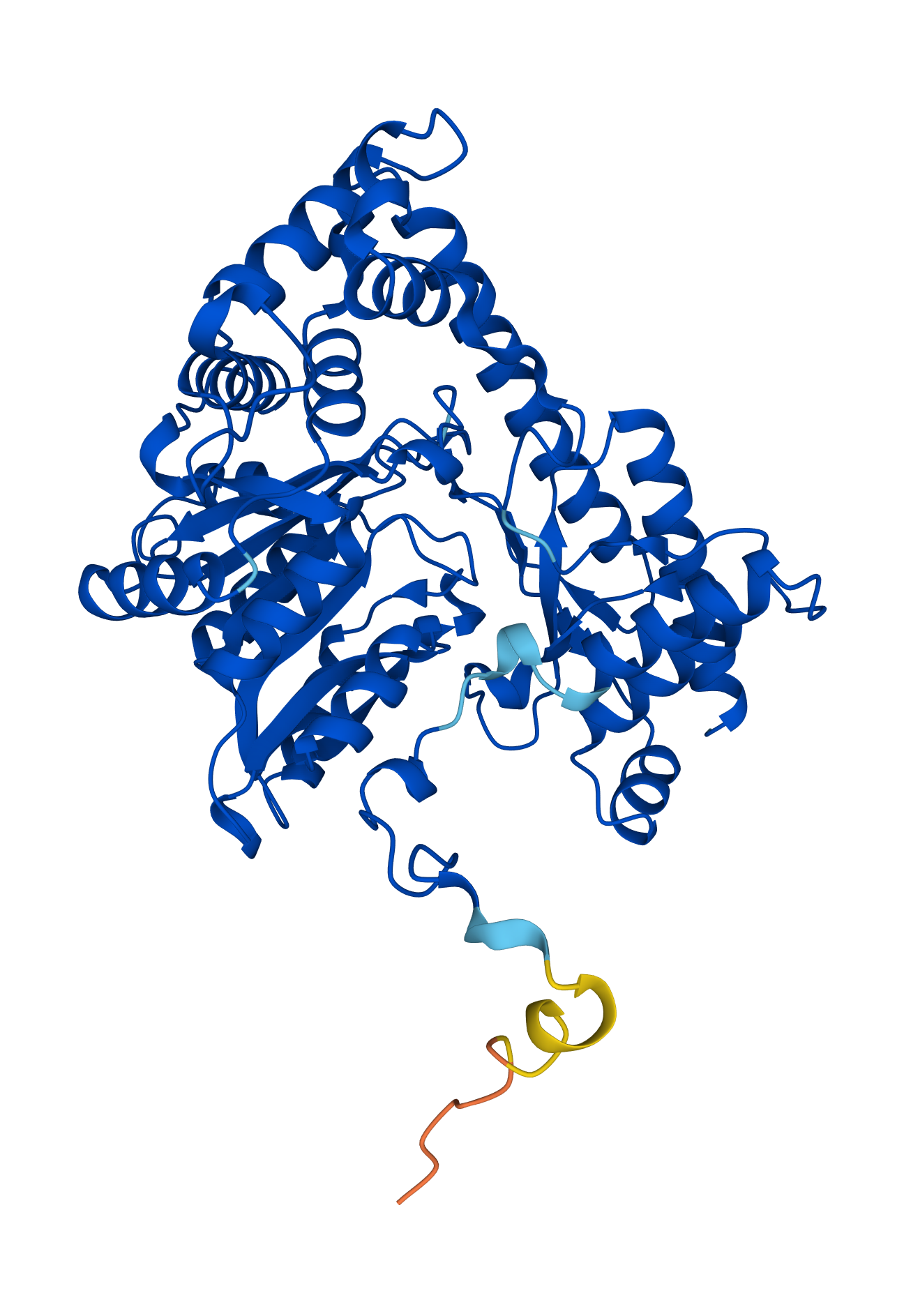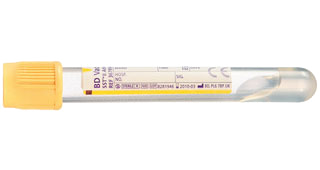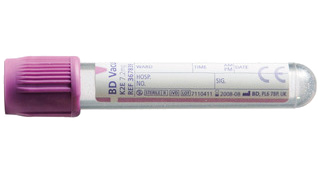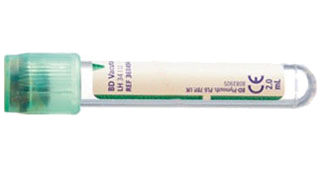
Synonymes
- ALAT, alanine aminotransférase
- (S)GPT, (serum) glutamaat-pyruvaat transaminase
- EC 2.6.1.2
Physiologie
L’alanine aminotransférase catalyse le transfert du groupe alpha-amino de l’alanine à l’oxoglutarate avec production de pyruvate et de glutamate. L’ALT se retrouve principalement dans le cytoplasme (et seulement en petites quantités dans les mitochondries). Pour une activité optimale, comme l’AST, cet enzyme nécessite le cofacteur P5P.
Spécificité
- L’ALT est présent dans le tissu hépatique, musculaire (coeur et squelettique), rénale et les globules rouges.
- L’ALT est assez spécifique pour le foie chez le chien chat, furet, et primates. A un moindre degré chez le lapin et les rongeurs.
- Le tissu hépatique chez des grandes herbivores et porcine contient une activité enzymatique faible limitant l’utilité.
- L’ALT est peu spécifique pour le foie aviaire et reptilien.
Sensibilité
- Haute pour l’inflammation, la nécrose, la lipidose et le néoplasme primaire hépatique.
- Plus faible pour la congestion, le néoplasme métastique ou les anomalies vasculaires portosystémique.
Espèces et références
Bovin
5 - 18
U/L
Chat
<109
U/L
Chien
<117
U/L
Chèvre
<52
U/L
Dauphin
U/L
Furet
<120
U/L
Lapin
<70
U/L
Mouton
<44
U/L
Oiseau
U/L
Phoque
U/L
Porc
19 - 76
U/L
Reptile
U/L
Caractéristiques
Abbréviation
ALT
Catégorie
Foie-voies biliaires
LOINC
Méthode
UV with P5P - IFCC Ref. Proc., Calibrated
Délai
le même jour
Prélèvement
*

Sérum

EDTA plasma

Li-Héparinisé plasma
* = préférence
Mis à jour le 30 octobre 2025 à 00:02
Références
1.
Valentine B, Blue J, Shelley S, Cooper B. Increased serum alanine aminotransferase activity associated with muscle necrosis in the dog. J Vet Intern Med. 1990;4(3):140-143. [PubMed]
2.
Swenson C, Graves T. Absence of liver specificity for canine alanine aminotransferase (ALT). Vet Clin Pathol. 1997;26(1):26-28. [PubMed]
3.
Sorensen K, Venn-Watson S, Ridgway S. Trace and non-trace elements in blood cells of bottlenose dolphins (Tursiops truncatus): variations with values from liver function indicators. J Wildl Dis. 2008;44(2):304-317. [PubMed]
4.
Venn-Watson S, Smith C, Jensen E. Assessment of increased serum aminotransferases in a managed Atlantic bottlenose dolphin (Tursiops truncatus) population. J Wildl Dis. 2008;44(2):318-330. [PubMed]
5.
Fauquier D, Mazet J, Gulland F, Spraker T, Christopher M. Distribution of tissue enzymes in three species of pinnipeds. J Zoo Wildl Med. 2008;39(1):1-5. [PubMed]
6.
Jerry Kaneko J, W. Harvey J, L. Bruss M. Clinical Biochemistry of Domestic Animals. Academic Press; 2008.
7.
Quesenberry K, W. Carpenter J. Ferrets, Rabbits and Rodents - E-Book. Elsevier Health Sciences; 2011.
8.
Montalvo V, Cruz M, Ahmad I, et al. Hepatitis E virus in bottlenose dolphins Tursiops truncatus. Dis Aquat Organ. 2017;123(1):13-18. [PubMed]
Récement sur pubmed
Chien
- Adams, J. Long-term clinical outcomes of healthy dogs with increased alanine aminotransferase. J Small Anim Pract. 2024;65 (12):857-866. doi: 10.1111/jsap.13777. PubMed PMID:39246001 .
- Schmidt, E, Schmidt, FW. Clinical enzymology. FEBS Lett. 1976;62 (SUPPL):E62-79. doi: 10.1016/0014-5793(76)80855-1. PubMed PMID:767140 .
- Geffré, A, Braun, JP, Germain, C, Palanché, F, Kueper, R, Trumel, C et al.. Comparison of measurements of canine plasma glucose, creatinine, urea, total proteins, alanine aminotransferase, and alkaline phosphatase obtained with the APOLOWAKO and Vitros 250 analyzers. Res Vet Sci. 2008;84 (3):354-60. doi: 10.1016/j.rvsc.2007.07.001. PubMed PMID:17826812 .
- Jensen, AL, Poulsen, JS. Evaluation of diagnostic tests using relative operating characteristic (ROC) curves and the differential positive rate. An example using the total serum bile acid concentration and the alanine aminotransferase activity in the diagnosis of canine hepatobiliary diseases. Zentralbl Veterinarmed A. 1992;39 (9):656-68. doi: 10.1111/j.1439-0442.1992.tb00231.x. PubMed PMID:1455934 .
- Rajamohan, F, Nelms, L, Joslin, DL, Lu, B, Reagan, WJ, Lawton, M et al.. cDNA cloning, expression, purification, distribution, and characterization of biologically active canine alanine aminotransferase-1. Protein Expr Purif. 2006;48 (1):81-9. doi: 10.1016/j.pep.2005.12.009. PubMed PMID:16495081 .
- Kim, C, Loftus, JP, Huson, HJ. Low alanine aminotransferase activity gene variant in a Siberian Husky with copper-associated hepatopathy. BMC Vet Res. 2023;19 (1):111. doi: 10.1186/s12917-023-03681-6. PubMed PMID:37550687 PubMed Central PMC10405506.
- Trumel, C, Diquélou, A, Germain, C, Palanché, F, Braun, JP. Comparison of measurements of canine plasma creatinine, glucose, proteins, urea, alanine aminotransferase, and alkaline phosphatase obtained with Spotchem SP 4430 and Vitros 250 analyzers. Res Vet Sci. 2005;79 (3):183-9. doi: 10.1016/j.rvsc.2004.12.001. PubMed PMID:16054888 .
- Myburgh, EC, Goddard, A. The effect of pyridoxal-5-phosphate on serum alanine aminotransferase activity in dogs suffering from canine babesiosis. Onderstepoort J Vet Res. 2009;76 (3):327-33. doi: 10.4102/ojvr.v76i3.38. PubMed PMID:21105601 .
- Noguchi, T, Okuno, E, Takada, Y, Minatogawa, Y, Okai, K, Kido, R et al.. Characteristics of hepatic alanine-glyoxylate aminotransferase in different mammalian species. Biochem J. 1978;169 (1):113-22. doi: 10.1042/bj1690113. PubMed PMID:629740 PubMed Central PMC1184200.
- Okuno, E, Minatogawa, Y, Nakanishi, J, Nakamura, M, Kamoda, N, Makino, M et al.. The subcellular distribution of alanine-glyoxylate aminotransferase and serine-pyruvate aminotransferase in dog liver. Biochem J. 1979;182 (3):877-9. doi: 10.1042/bj1820877. PubMed PMID:518570 PubMed Central PMC1161423.
Chat
- Sase, O. Molnupiravir treatment of 18 cats with feline infectious peritonitis: A case series. J Vet Intern Med. 2023;37 (5):1876-1880. doi: 10.1111/jvim.16832. PubMed PMID:37551843 PubMed Central PMC10472991.
- Osako, H, Xu, Q, Nabeshima, T, Balingit, JC, Nwe, KM, Yu, F et al.. Clinical Factors Associated with SFTS Diagnosis and Severity in Cats. Viruses. 2024;16 (6):. doi: 10.3390/v16060874. PubMed PMID:38932167 PubMed Central PMC11209305.
- Jergens, AE, Crandell, JM, Evans, R, Ackermann, M, Miles, KG, Wang, C et al.. A clinical index for disease activity in cats with chronic enteropathy. J Vet Intern Med. 2010;24 (5):1027-33. doi: 10.1111/j.1939-1676.2010.0549.x. PubMed PMID:20584141 .
- Lumb, MJ, Purdue, PE, Danpure, CJ. Molecular evolution of alanine/glyoxylate aminotransferase 1 intracellular targeting. Analysis of the feline gene. Eur J Biochem. 1994;221 (1):53-62. doi: 10.1111/j.1432-1033.1994.tb18714.x. PubMed PMID:8168541 .
- Lawrence, YA, Steiner, JM. Laboratory Evaluation of the Liver. Vet Clin North Am Small Anim Pract. 2017;47 (3):539-553. doi: 10.1016/j.cvsm.2016.11.005. PubMed PMID:28063744 .
- Lidbury, JA. Getting the Most Out of Liver Biopsy. Vet Clin North Am Small Anim Pract. 2017;47 (3):569-583. doi: 10.1016/j.cvsm.2016.11.007. PubMed PMID:28081862 .
- Kam, A, Maddison, JE, Szladovits, B. Retrospective study of biochemical profile changes in 93 cats with different hepatobiliary diseases. J Feline Med Surg. 2025;27 (6):1098612X251335202. doi: 10.1177/1098612X251335202. PubMed PMID:40470580 PubMed Central PMC12141792.
- Siow, JW, Hoon, QJ, Jenkins, E, Heblinski, N, Makara, M. Caval foramen hernia in a cat. JFMS Open Rep. 2020;6 (2):2055116920964021. doi: 10.1177/2055116920964021. PubMed PMID:33149929 PubMed Central PMC7585893.
- Buchta, K, Zuzzi-Krebitz, AM, Bergmann, M, Dorsch, R, Zwicklbauer, K, Matiasek, K et al.. Unexpected Clinical and Laboratory Observations During and After 42-Day Versus 84-Day Treatment with Oral GS-441524 in Cats with Feline Infectious Peritonitis with Effusion. Viruses. 2025;17 (9):. doi: 10.3390/v17091181. PubMed PMID:41012609 PubMed Central PMC12474142.
- Noguchi, T, Okuno, E, Takada, Y, Minatogawa, Y, Okai, K, Kido, R et al.. Characteristics of hepatic alanine-glyoxylate aminotransferase in different mammalian species. Biochem J. 1978;169 (1):113-22. doi: 10.1042/bj1690113. PubMed PMID:629740 PubMed Central PMC1184200.
